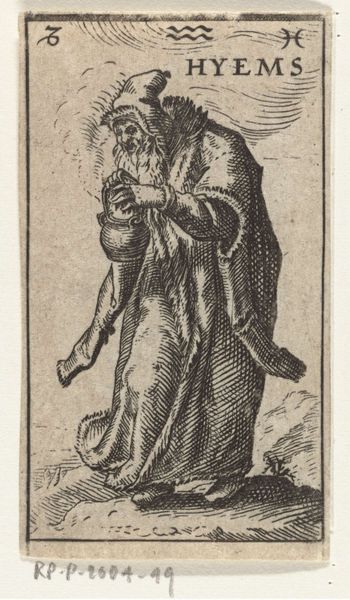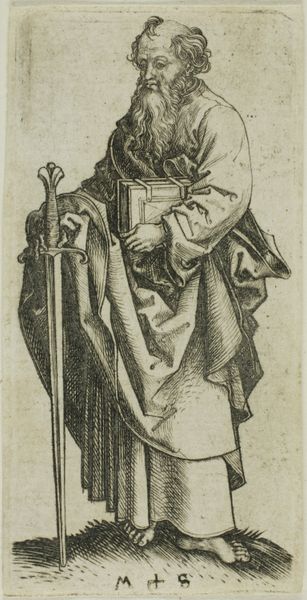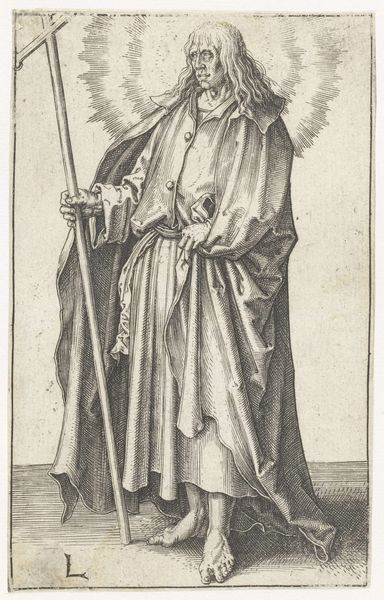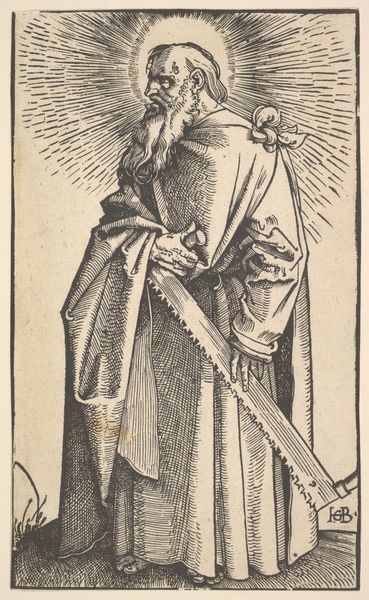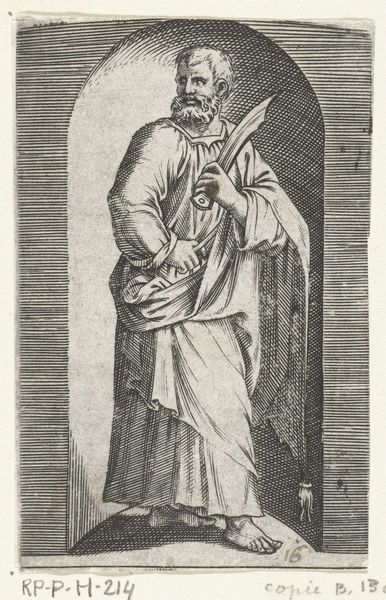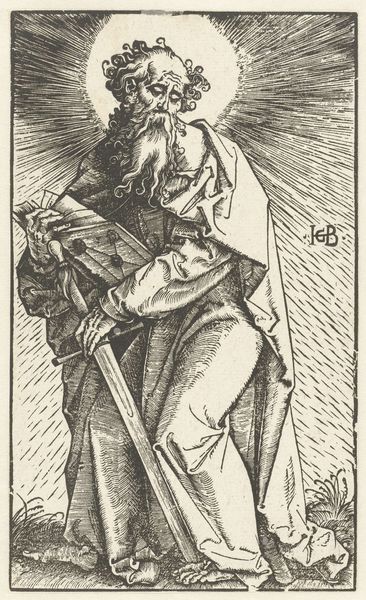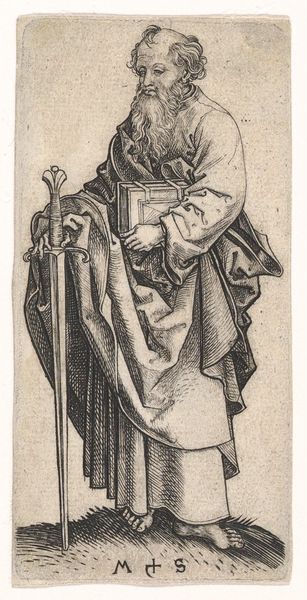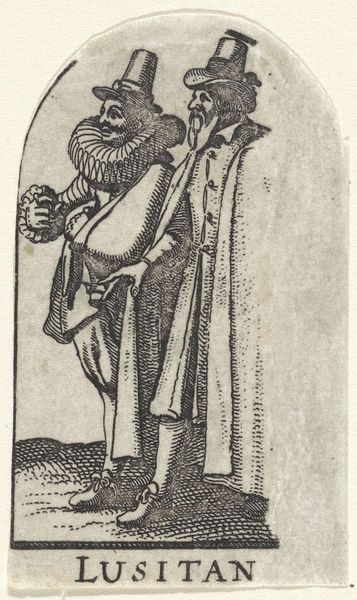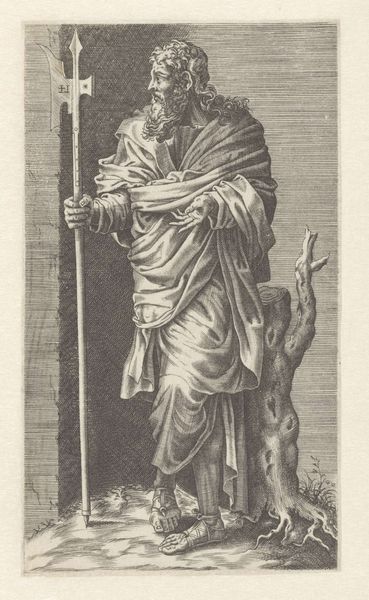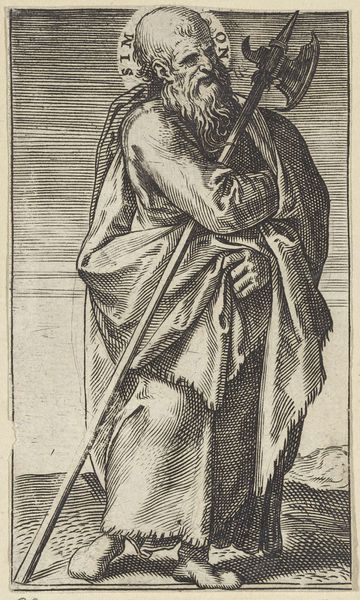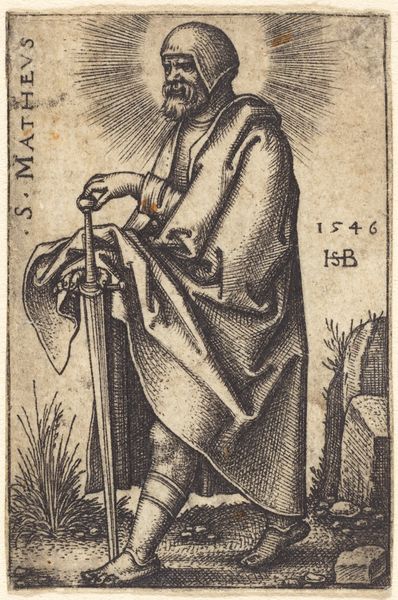
drawing, print, woodcut
#
portrait
#
drawing
# print
#
pen illustration
#
pen sketch
#
figuration
#
woodcut
#
history-painting
#
northern-renaissance
Dimensions: height 211 mm, width 127 mm
Copyright: Rijks Museum: Open Domain
Editor: Here we have Hans Baldung’s woodcut from 1519, titled “Jakobus de Meerdere als pelgrim,” or Saint James the Greater as a pilgrim. The figure, rendered in stark black and white, has a very worn yet determined expression. What do you see in this piece, especially given the historical context? Curator: I see an intersection of religious devotion and social realities of the early 16th century. Pilgrimages were significant acts of faith but also a way for ordinary people to engage with a wider world, often marked by hardship. Consider how Baldung depicts Saint James. The detailed rendering of his weathered face and simple clothes tells a story about lived experience, perhaps echoing the artist's own engagement with religious and social issues of his time. The halo is traditional, of course, but juxtapose it with the tattered clothes: how does this speak to you? Editor: It does create an interesting contrast, setting up a tension between the saintly ideal and the earthly reality. Curator: Exactly. Think about the Reformation brewing at this time. The image seems to democratize holiness, bringing it down to earth, making it relatable. It moves beyond the opulent representations often associated with religious figures of that era, centering it in the material world. Pilgrimage, of course, as a form of journey is both individual and communal, and in this, opens a dialogue about power and freedom of movement in a pre-modern world. Editor: That gives me a completely new way of seeing the piece. Thank you for putting this print in a context I can understand! Curator: My pleasure. It’s crucial to recognize how art like this not only reflects but actively shapes our understanding of faith, identity, and social justice across time.
Comments
No comments
Be the first to comment and join the conversation on the ultimate creative platform.

